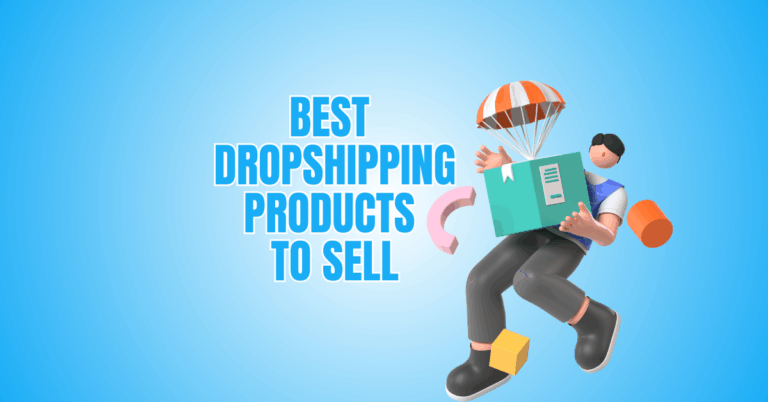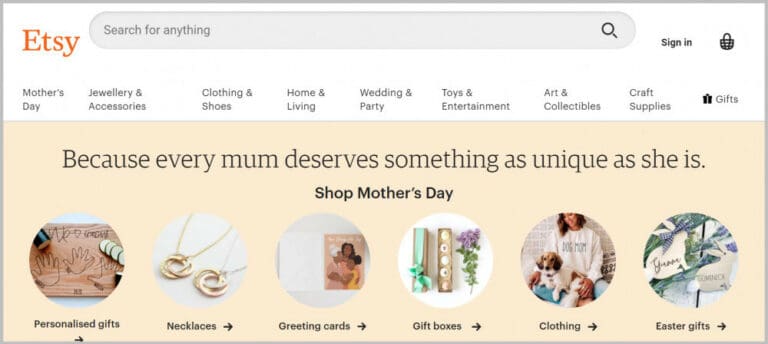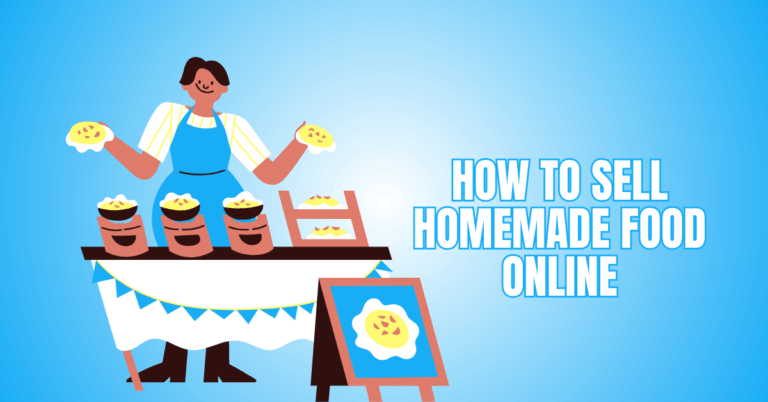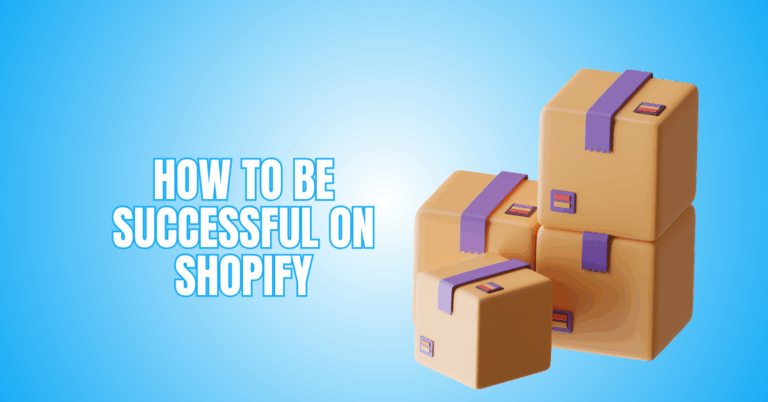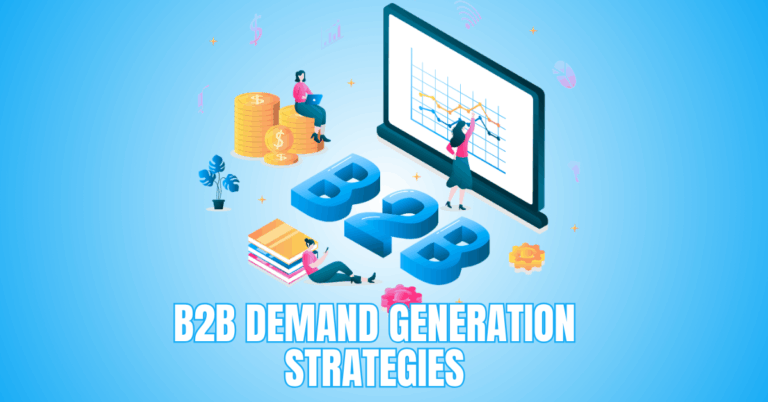How To Sell Online Items
How To Sell Online Items
Selling online items has become one of the most accessible ways to earn money, reach global customers, and grow a business from home.
To succeed in the digital marketplace, learning how to sell online items effectively is key to turning your ideas into profit.
This article will guide you through every critical step, from choosing what to sell to gaining customers' trust, so you can confidently launch and grow your online selling business, regardless of your experience level.
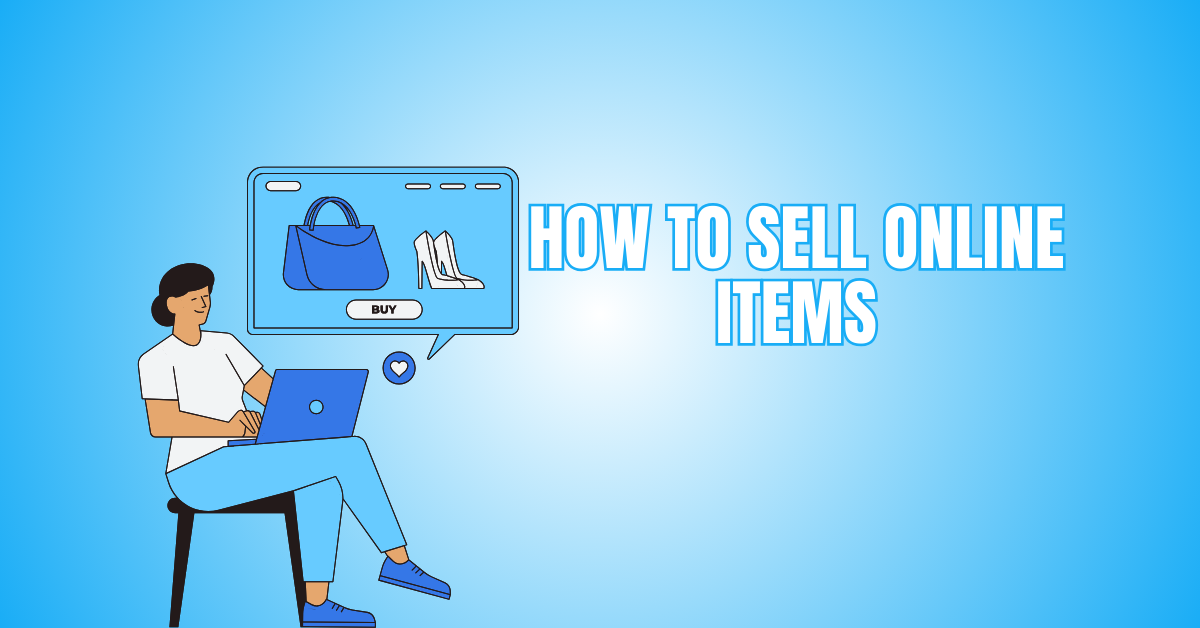
Best Items To Sell Online
Here’s a list of the best items to sell online in 2025, organized by category, along with brief insights into why they perform well:
1. Health & Wellness Products
Health and wellness items like resistance bands, yoga mats, herbal supplements, and massage guns are in high demand as people focus more on fitness and mental well-being.
These products often require little technical knowledge to sell. They are suitable for dropshipping and private labelling. Selling directly through Shopify or Amazon can yield profits of $10–$50 per unit, depending on the product. With clever marketing, monthly earnings can exceed $2,000 for a small online shop.
2. Eco-Friendly Products
Eco-conscious products like reusable straws, beeswax wraps, bamboo cutlery, and compost bins attract consumers who want to reduce their carbon footprint.
These items are lightweight, easy to ship, and appeal to a loyal, niche market. Low production costs and strong branding can lead to high markups—profits of $5–$30 per item.
Monthly earnings could reach $1,500–$4,000 if marketed well through eco-focused platforms and social media influencers.
3. Tech Accessories
Selling accessories like wireless chargers, Bluetooth earphones, portable phone holders, and cable organizers can be highly profitable.
These products are inexpensive to source and appeal to tech-savvy shoppers who constantly upgrade gadgets. Each item can earn $7–$25 in profit.
With the right SEO strategy and a clean website, a seller could earn $2,000–$6,000/month. Bundle deals and custom packaging can increase perceived value and repeat purchases.
4. Home Organization Products
Organizational tools like drawer dividers, over-the-door storage racks, and closet organizers are popular among minimalists and home decor enthusiasts.
Understanding how to sell online items like organizational tools can help you tap into a growing market of remote workers and minimalist lifestyle enthusiasts.
Want to Start Making Money Online?
Try My #1 Recommendation Program!
These products offer profits of $10–$40 per unit. Monthly earnings can vary from $1,500 to $5,000, particularly if advertised on Instagram Reels or Pinterest. Upselling sets or room-specific kits boosts revenue significantly.
5. Pet Products
Pet owners spend generously on accessories, toys, and treats. Hot sellers include vegan dog snacks, grooming brushes, personalized collars, and interactive toys.
This niche has a strong emotional appeal, increasing customer loyalty and repeat business. Depending on the item, profits range from $5 to $35.
A dedicated pet brand can generate $2,000–$8,000/month or more through Etsy, Amazon, and social media ads. Subscription models also perform well in this category.
6. Beauty & Skincare Products
Natural, cruelty-free, and vegan skincare products like serums, clay masks, and face rollers attract conscious consumers. With good branding and packaging, these products can command high markups—$10 to $60 per item.
DIY beauty kits and custom formulations also do well. Sellers earn $3,000–$10,000/month, especially when promoted by influencers or used in tutorial content.
Starting a private-label line or dropshipping from reputable suppliers can help new sellers enter this lucrative market.
7. Digital Products
E-books, online courses, printable planners, and Lightroom presets have high profit margins because they require no inventory or shipping.
Once created, they can be sold repeatedly, making this a great passive income stream. Profits range from 90% to nearly 100% of the selling price, usually $5 to $200 per sale.
Successful sellers often make $1,000–$10,000/month depending on audience size, niche, and platform (e.g., Etsy, Gumroad, or Teachable).
8. Home Decor
Popular items include wall art prints, LED lights, handmade vases, and boho tapestries. These appeal to interior design lovers and renters looking to personalize spaces.
Want to Find Out How To Start Your Home-Based Business?
Try My #1 Recommendation Platform!
Profits typically range from $8–$45 per item. Selling on Etsy, Amazon Handmade, or via your store can yield monthly earnings of $2,000–$7,000.
Offering seasonal collections or collaborating with influencers can boost visibility and demand. Visual presentation and lifestyle photography are crucial to standing out.
9. Fashion & Accessories
Trendy fashion pieces like printed T-shirts, minimal jewelry, and handmade bags offer strong profit potential. Selling items at $20–$60 with production costs under $10 allows for $10–$50 in profit.
Custom designs and print-on-demand options reduce risk. Depending on audience engagement and ad strategy, earnings can range from $2,000 to $10,000/month.
Shopify and Etsy are top platforms for fashion sellers, and Instagram or TikTok play a massive role in driving traffic.
10. Hobby & DIY Kits
Craft kits like candle-making, embroidery, paint-by-numbers, and soap kits are great for gifting and self-care. They’re popular during holidays and with stay-at-home audiences.
These kits cost $5–$15 to produce and can sell for $20–$60, offering profits of $10–$45 per sale. Niche stores can make $1,500–$6,000/month, especially with targeted Facebook or Pinterest ads. Offering step-by-step video tutorials adds value and increases customer satisfaction.

How To Sell Online Items
Now that you understand the potential of selling online, it's time to explore the essential steps to guide you toward success.
Each step is vital in building a profitable and sustainable online business, from choosing the right products to scaling your store. Let’s dive into the key strategies you need to start selling confidently:
1. Identify What To Sell
Choosing products that fit current market demand and your interests is the first step in learning to sell things online. You could sell handmade goods like jewelry and crafts, dropshipping, digital products like eBooks or courses, vintage finds, or print-on-demand products.
Use research tools like Google Trends, Etsy Trends, or Amazon Best Sellers to analyze current market trends and see what’s popular.
Ensure your product solves a problem, is in demand, and can be priced competitively while earning a profit. You can also check online forums, niche communities, and keyword tools to verify interest in your product.
Avoid jumping into overly saturated markets unless you have a unique angle or brand. Remember that the best products are often those you enjoy working with and align with your expertise.
2. Choose The Right Platform
Selecting the right selling platform is crucial for reaching your ideal customers. You can choose between marketplaces and creating your online store.
Popular platforms include Amazon, which offers a vast reach but has high competition and fees.
- eBay is great for secondhand and collectibles.
- Etsy is ideal for handmade and vintage items.
- Shopify is perfect for creating your own branded store.
- Facebook Marketplace is suitable for local transactions.
Start by comparing platform fees, ease of setup, audience type, and level of control. If you’re a beginner, Etsy or Facebook Marketplace can be easier.
For long-term growth and branding control, Shopify or WooCommerce are excellent. Think about which platform type best fits your product category and business objectives, and where your target clients are most active.
3. Set Up Your Online Store
Once you’ve selected your platform, it’s time to set up your store professionally. Select a distinctive and memorable name for your store and create a logo that captures the essence of your company.
Use high-quality, well-lit photos to showcase your products from multiple angles, and make sure they highlight essential details.
Are You Tired Of Scams?
Want to Start Making Money Online?
Compose engaging product descriptions highlighting the product's advantages, use crucial SEO keywords, and, if necessary, give information on the product's size, materials, and maintenance requirements.
Price your items competitively by factoring in production costs, competitor pricing, and desired profit margins. Choose a responsive, mobile-friendly theme on platforms like Shopify or WooCommerce and configure secure payment methods. Don’t forget to set up your shipping policies, return policies, and legal disclaimers according to your local regulations.
4. Manage Inventory And Fulfillment
Effective inventory management and fulfillment are key to keeping customers happy and avoiding overselling. Start by choosing how you’ll fulfill orders—manual shipping, using third-party logistics (3PL), or dropshipping.
Manual shipping is best for smaller volume sellers; invest in quality packaging supplies and shipping labels. Use calculators from courier services to determine accurate shipping rates.
Although they need upfront fees, fulfillment services such as Amazon FBA or 3PL providers can save you time by storing, packing, and shipping your products.
Dropshipping allows suppliers to ship directly to customers without holding inventory, though you’ll have less control over quality and shipping speed.
Track inventory using spreadsheets or inventory management software like Zoho Inventory to avoid running out of stock or overordering.
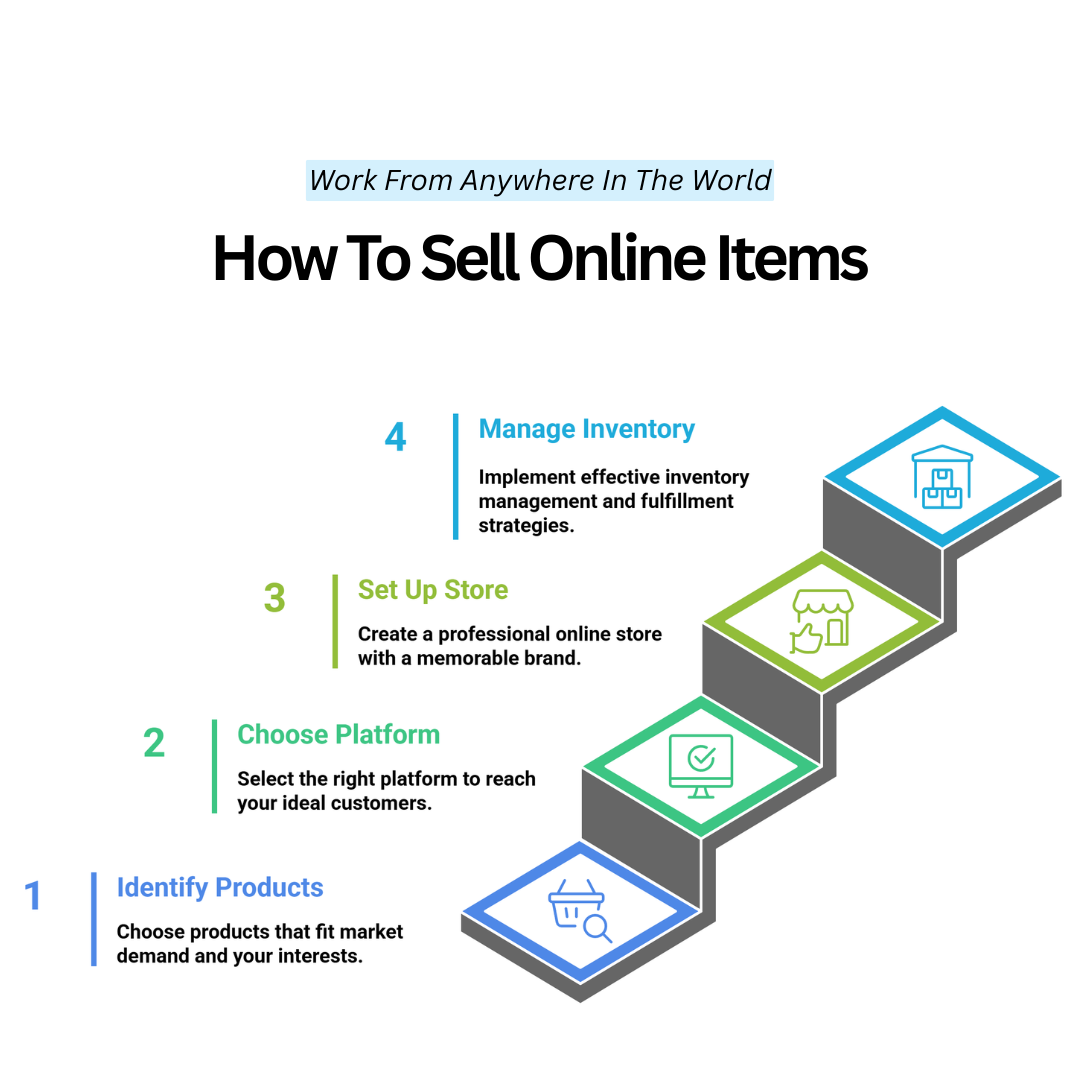
5. Market Your Products Online
To draw in and keep consumers, marketing is crucial. Create business accounts on Facebook, Instagram, and TikTok, among other social media platforms.
Post engaging content consistently, including product photos, behind-the-scenes videos, customer testimonials, and promotions.
Work together with niche influencers to increase your visibility. Use pertinent keywords in the titles, descriptions, and meta tags of your product listings and website to make them more search engine-friendly.
Build an email list with signup incentives like discounts or freebies, and send regular newsletters about new products and sales.
Invest in targeted traffic-generating paid advertising on platforms like Facebook, Google Ads, or Pinterest Ads. Track your campaigns and tweak based on performance data.
Lastly, start a blog or YouTube channel offering applicable content related to your niche to attract organic traffic.
6. Provide Excellent Customer Service
A key part of mastering how to sell online items is delivering excellent customer service that builds trust and encourages long-term loyalty.
Set clear expectations about shipping times, return policies, and product usage in your listings. Be responsive to customer inquiries through email, chat, or social media.
Address questions and concerns politely and professionally. Use customer service platforms like Zendesk or Freshdesk to streamline communications if your volume grows.
Want To Learn How To Create Your Own Website And Online Business?
Try My #1 Recommendation Training And Hosting Platform!
After purchase, send follow-up emails to confirm the order, notify about shipping, and ask for feedback. Offer modest discounts or loyalty points as a token of appreciation to pleased clients who write reviews.
Be prepared to handle refunds and returns gracefully—it’s a regular part of online selling. A positive service experience can turn a one-time buyer into a lifelong customer, leading to valuable word-of-mouth marketing.
7. Monitor And Optimize Performance
Tracking your store’s performance lets you understand what’s working and needs improvement. Use tools like Google Analytics, Shopify’s built-in analytics, or your chosen platform’s dashboard to track metrics like website traffic, conversion rates, customer retention, and cart abandonment rates.
Look at where your traffic is coming from—social media, search engines, email campaigns—and invest more in what’s working.
Perform A/B tests by changing product titles, images, pricing, or descriptions to see which versions perform better. Monitor customer behaviour on your site using heatmaps to identify usability issues.
Utilize consumer input to improve services and product offerings. Set monthly goals and review your performance regularly to stay on track. Optimization is ongoing—keep learning and adapting to trends, algorithm updates, and customer preferences.
8. Scale Your Business
Once your online store gains traction, focus on scaling for growth. Using sales data and customer input, broaden your product line.
Consider selling on additional platforms to reach more customers, such as launching on both Etsy and Amazon, or adding international shipping options.
Automate repetitive tasks like order confirmation emails, inventory updates, and social media posting using tools like Zapier or Buffer. Hire freelancers or virtual assistants to handle customer service, design, or fulfillment tasks so you can focus on strategy.
Improve branding with updated packaging, logo refreshes, and cohesive visuals across all platforms. Consider offering wholesale options to other businesses or retailers.
Join eCommerce communities, take advanced courses, and attend virtual events to stay updated and inspired. Constantly be testing, optimizing, and exploring new growth opportunities.

9. Understand Legal And Tax Requirements
Before selling online, ensure your business is legally compliant. Start by choosing a business structure (sole proprietorship, LLC, etc.) and registering your business name through your local authority or online portal. Ensuring your company satisfies all legal and tax standards is crucial to learning how to sell products online.
Apply for an EIN (Employer Identification Number) if needed for taxes. Understand sales tax laws in your state or country and register to collect sales tax if applicable—tools like Shopify Tax or TaxJar can help automate this.
Create a privacy policy, return policy, terms and conditions, and disclaimers on your website to build trust and meet legal obligations.
10. Build A Strong Brand Identity
Choose a unique business name and design a logo that reflects your brand personality. Select consistent brand colours, fonts, and visual elements that appeal to your ideal customer. Develop a professional, friendly, quirky, or bold brand voice and use it consistently in all messaging.
Create branding guidelines to maintain uniformity across platforms. Use the same tone, colours, and imagery on your website, social media, packaging, and emails.
Building trust, creating a distinctive brand, and standing out in a congested online marketplace are all made possible by a strong, consistent identity.
11. Take Professional Product Photos
Taking professional product photos is essential for building trust and increasing sales. Start with a good-quality camera or smartphone with high resolution.
Use natural lighting near a window or use a lightbox for consistent lighting. Use a clean, uncluttered background—white is standard for eCommerce. Take multiple shots from different angles: front, back, side, and close-ups of key features.
To assist customers in picturing themselves owning the product, including lifestyle pictures of them using it. To ensure steady framing and stability, use a tripod.
Edit images slightly for brightness and sharpness, but avoid over-filtering. Keep your style uniform throughout all product listings to bolster the professionalism of your brand and build an eye-catching business.
12. Write Compelling Product Descriptions
Writing compelling product descriptions requires a balance of clarity, persuasion, and SEO. Start by identifying your product’s key features and how they benefit the customer.
Use engaging, conversational language that reflects your brand voice. Tell a story when possible—describe how the product fits into a buyer’s life. Structure your text with short paragraphs and bullet points for easy scanning.
Include specifications like size, material, colour, and usage instructions. Address common concerns or questions to reduce hesitation (e.g., “Is it machine washable?”).
Integrate relevant keywords naturally to improve search rankings. A clear, benefit-driven description helps buyers make confident decisions and significantly increases conversion rates.
13. Offer Promotions And Discounts
One of the best ways to attract new customers and increase sales is to offer discounts and promotions. Start by choosing your offer type:
- Percentage off
- Dollar amount off
- BOGO deals
- Bundle discount, or
- Free shipping.
Tailor the promotion to your goals—acquiring customers, clearing inventory, or boosting average order value.
Set clear terms (e.g., minimum spend, expiration date) and use tools on platforms like Shopify or WooCommerce to automate the promotion.
Highlight the deal on your homepage, product pages, and banners. Promote across email, social media, and pop-ups to create urgency.
Use countdown timers or “limited stock” labels to enhance FOMO. Track performance and adjust future campaigns based on customer response and ROI.

Conclusion
Selling online items successfully requires thoughtful planning, the right tools, and consistent effort. Each step builds your path to eCommerce success, from choosing the right products and platforms to effectively creating a strong brand and marketing.
You can grow a profitable online business by focusing on customer experience, optimizing performance, and staying informed about trends and legalities.
The secret to converting your passion into revenue and creating a long-lasting eCommerce business is knowing how to sell products online.
I trust you enjoyed this article about How To Sell Online Items. Please stay tuned for more articles. Take care!
JeannetteZ
Want to Learn How to Build Your Own Home-Based Online Business And Start Making Money Online From Your Comfortable Couch?
Try Wealthy Affiliate!
Your Opinion Is Important To Me
Do you have thoughts, ideas, or questions? I would love to hear from you. Please share your questions, experiences, remarks, and suggestions about How To Sell Online Items in the comments below. You can also email me at Jeannette@WorkFromAnywhereInTheWorld.com.
Disclosure
This post may contain affiliate links. I earn from qualifying purchases as an Amazon Associate and through other affiliate programs. Please read my full affiliate disclosure.
You may also enjoy the following articles:
Wealthy Affiliate Coupons For Premium Memberships
Wealthy Affiliate Review – Scam or Legit? The Truth Exposed
An Insider Wealthy Affiliate Review
Selling On eBay – 9 Steps To Making An Excellent Living
How To Sell On Etsy – 7 Steps To Open Your Etsy Shop


